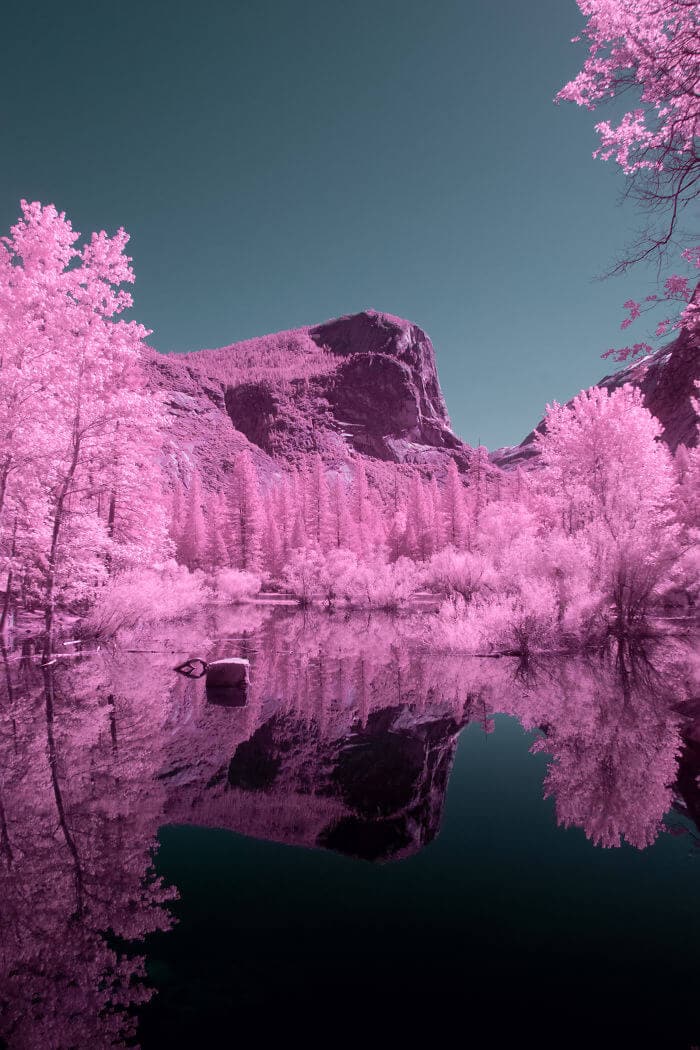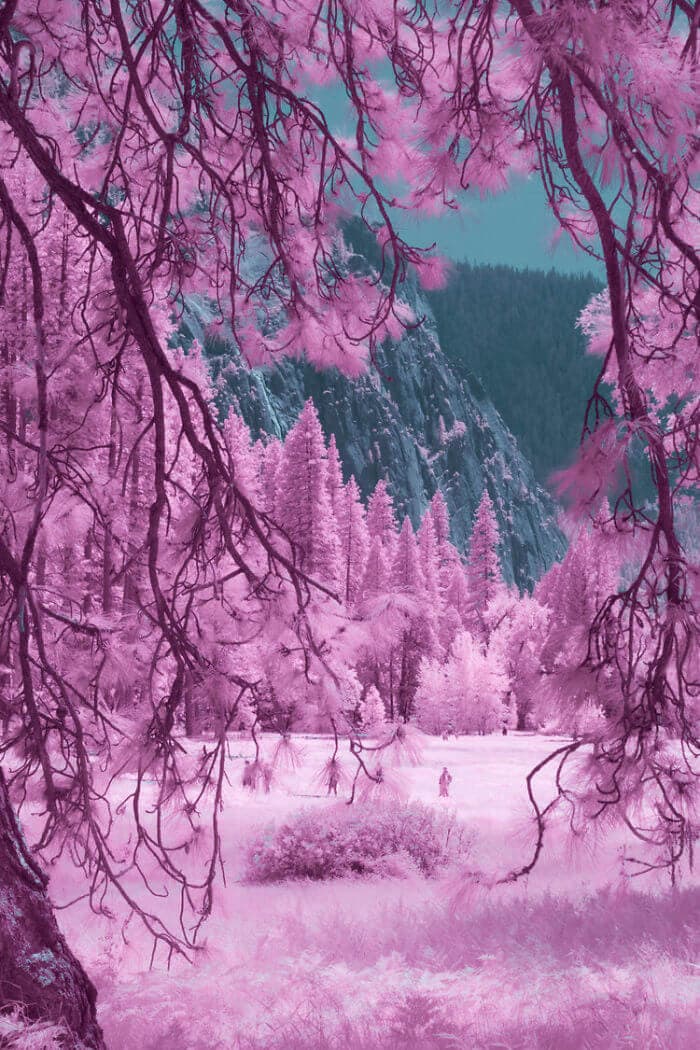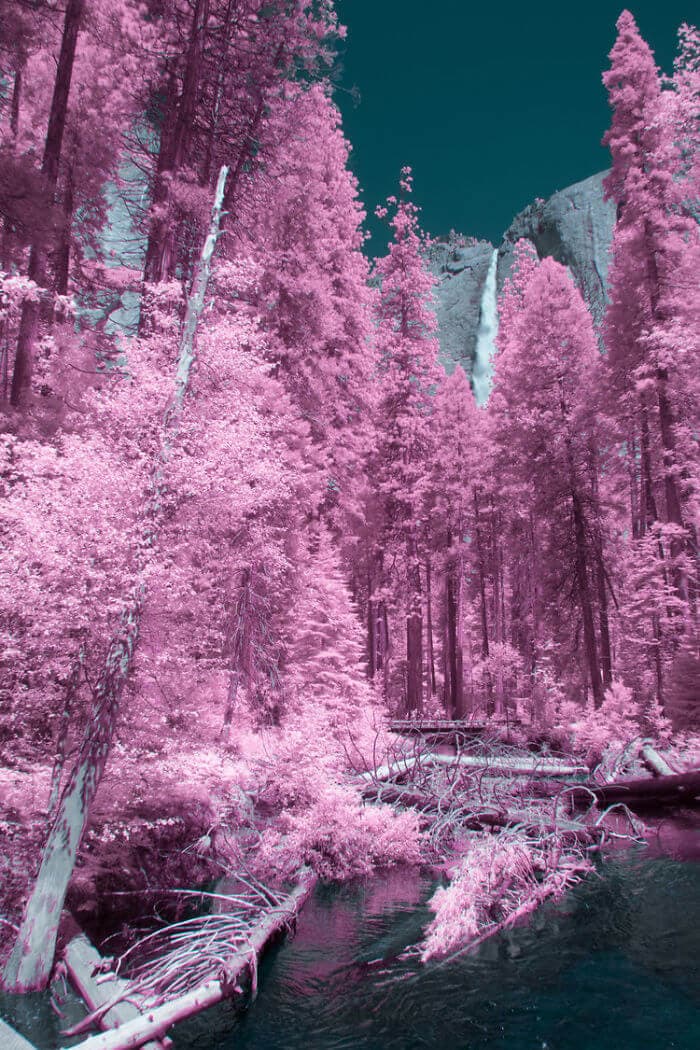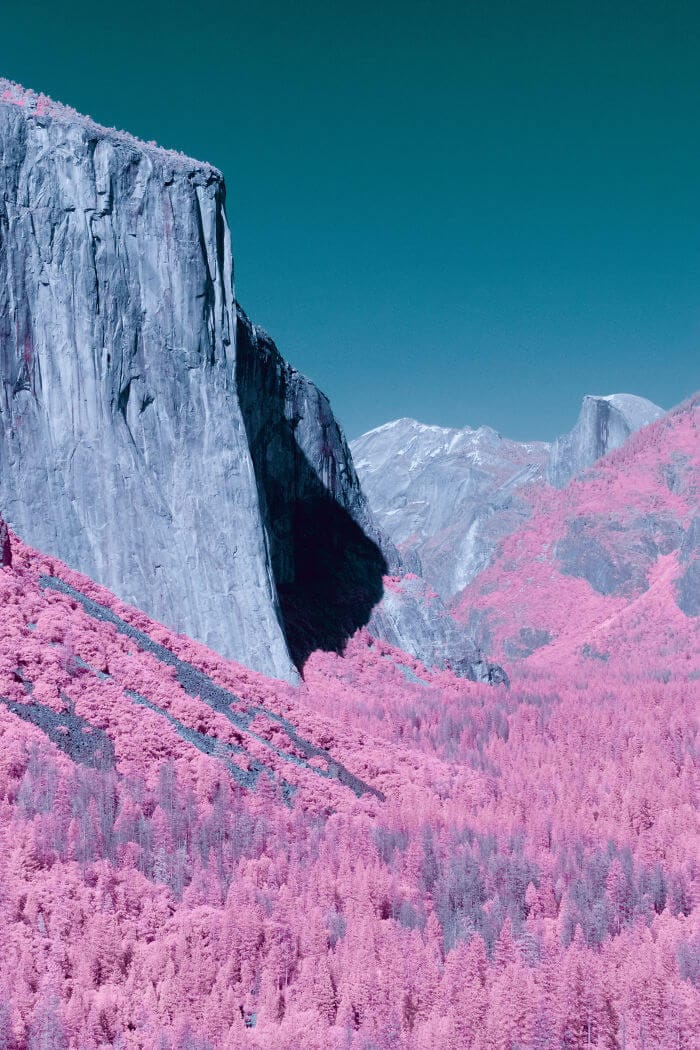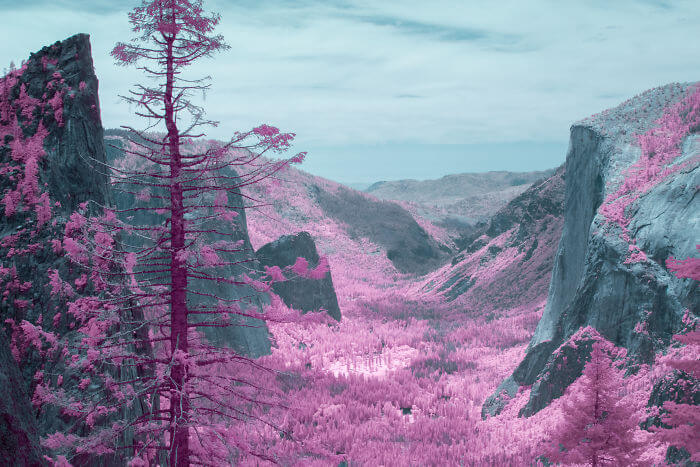Art critics noted the stink as soon as the elevator opened. Indeed, the morning of the Whitney Museum of American Art's Biennial preview, Pope L.'s contribution smelled like rotten lunch. For good reason: Claim, on view through June 11, consists of 2,755 bologna slices nailed in grid formation on the walls of a small, freestanding room within the exhibition.
Plastic basins catch the grease run-off along the museum floor. By early April, nearly a month later, the stench had faded considerably and in May, it seemed gone, as the bologna dried—or "cured" per ArtNews—into something probably more akin to beef jerky now. Claim considers the usefulness of race as a social category: Affixed to each piece of meat is a photocopy of someone who may or may not be Jewish. According to the Whitney's label, the number of slices reflects 1 percent of the Jewish population in New York. Or not. The math, we're told, is a "bit off"— a deliberate misrepresentation that doesn't actually correspond to census data, the pictures taken at random. What, the artist is asking, makes us think we can recognize Jews—or any other identity—with certainty? On June 2, Pope L. received the Whitney's prestigious Bucksbaum Award, which grants one Biennial participant— whose work demonstrates a "singular combination of talent and imagination" — a future museum exhibition.
![]()
Installation view of Pope.L aka William Pope.L, Claim (Whitney Version), 2017. Whitney Biennial 2017. (Bill Orcutt)
But among the questions it presents, Claim, more than other artwork in the Biennial, stresses the unique problems museums and collectors face as contemporary art grows more ambitious in its materials: how to conserve works made of substances meant to last for several days or weeks. After all, it's difficult to imagine bologna portraits transcending millennia like a classical marble bust or centuries like a Rembrandt. Getting a sculpture made of deli meat to survive the decade could even be a stretch. While Claim may be an extreme case of perishable art, Pope L. is far from alone. Today's art world is filled with artists using seemingly banal, yet wacky household items— from a miniature Algerian town made of couscous to a huge Styrofoam cup cloud— elaborate, significant work that challenges not only what art is, but how exactly, future generations will be able to experience it.
That conservators play a pivotal role in art history is a given. The Metropolitan Museum of Art's department of scientific research includes researchers with backgrounds in chemistry, biology, geology, and engineering. The director of the Straus Center for Conservation and Technical Studies at the Harvard Art Museums, Narayan Khandekar, has a Ph.D. in organic chemistry, with post-graduate training at London's Courtauld Institute of Art. A conservator's goal, he says is to ensure that viewers appreciate the art, rather than get distracted by the damages. But conservation decisions can stir up controversy both in and outside the art world. On a busy day, for example, nearly 20,000 tourists can stream through the Sistine Chapel, according to The New York Times, trekking dirt particles and humid air with them, slowly degrading the paint on the ceiling's artwork. In 1990, after much debate and public scrutiny, a team of restorers completed a major cleaning of Michelangelo's f rescos. Ironically, the restoration might be too good. Some people worried that the chemical solvent, AB-57— a gelatinous substance that Vatican assistants applied to the 16th-century masterpiece and then wiped off with distilled water—produced sharper colors than the artist's original artwork.
![]()
Narayan Khandekar, director of the Straus Center for Conservation and Technical Studies at the Harvard Art Museums, examines a piece composed entirely of rose petals.(Stephanie Mitchell / Harvard)
And artists have long had a love affair with new, malleable materials, making conservation more challenging. Polymer-based artwork especially has vexed conservators of 20th-century art. Anyone who's left a water bottle in the car too long can attest that light and heat degrade the molecular structure of plastic or resin.
Meanwhile, replacing an outdated part—like a 1960s florescent tube in one of Dan Flavin's light installations—has also forced curators to decide what is an acceptable change after an artist dies, explains Don Thompson, author of The Orange Balloon Dog: Bubbles, Turmoil and Avarice in the Contemporary Art Market. The structure of light bulbs are different now and certain colors have been discontinued, Thompson says, raising questions about which materials can substitute for the original without compromising an artwork's legitimacy. Flavin, a minimalist pioneer, was known for using readily available, mass-produced items as a matter of principle, such as light bulbs he purportedly bought on Canal Street in Soho. His intent was to create sculptures from ordinary hardware store materials, knowing they would eventually become obsolete.
But the transient nature of some of the most recent artwork is distinctive: These artists are using products that are meant to decompose rapidly by design. For this segment of 21st-century art, museums are consciously conserving art as it's created. Now, scientists must invent ways to preserve the most tenuous of materials, rather than simply restoring pieces to their original—or most authentic—luster.
Even seasoned buyers can be caught unaware by how much contemporary work is made of materials that deteriorate quickly, says Emily MacDonald-Korth. She is the founder of Art Preservation Index, a kind of Standard & Poor's for the art market that issues a durability report on a painting or a sculpture's likelihood of technological obsolescence. Fragility is a particular concern as art prices continue to break records: What precisely are private collectors and museums acquiring? How long will their investments last? Brooklyn artist Dan Colen, for example, is famous for using bubblegum to create textured "paintings." His freestyle technique and faintly bad boy persona have drawn comparisons to Jackson Pollock. "Is it bubblegum, or is it an abstract painting using bubblegum?" he's said of his work. And while the contemporary art market can be fairly opaque, in 2010, a piece from Colen's gum period titled S & M sold at Phillips auction house for over half-a–mi llion dollars. Philanthropists Rosa and Carlos de la Cruz own multiple pieces of his work that they share with the public at their contemporary art space in Miami. At first, as Colen told The New York Times writer Carol Vogel, he and his studio assistants "just started chewing"— everybody would have to do it "all day long." Still, they couldn't produce enough material, yielding only three paintings in a year. So he started heating the gum to the right consistency instead, which then hardens and dries on the canvas like paint.
But think about the science of gum, says MacDonald-Korth. Mouths are normally somewhere in the range of 90 degrees Fahrenheit; a stick also softens around eighty degrees in a person's pocket, she adds. In her experience, if the painting's atmosphere approaches that temperature— say an HVAC system malfunctions— the gum can sag or fall off completely. She also cautions that Colen's paintings may sprout biological growth like mold, and drip "sugar-based exudates" that attract bugs and ants. Size might play an important preservation role too. Smaller bubblegum paintings at the de la Cruz collection, I've noticed, aren't as pungent, while the sugary smell of one of Colen's larger works overtook a Chelsea gallery exhibit last spring, and it's easy to imagine insects flocking to it. Art made of chocolate can similarly attract pests, according to MacDonald-Korth, in addition to secreting a white material that "looks terrible." Researchers call this chemical proce ss "fat blooming"— a harmless white defect you might notice on unopened chocolate months after Halloween— caused by lipids that migrate and then crystalize on the candy's surface.
"The list goes on and on," MacDonald-Korth says. "I bet you can ask me about any food in existence and I'll tell you at least three significant concerns. Food drastically changes in composition over time." By her estimate, a Colen gum painting has a shot at weathering 25 years, if kept under strict environmental controls. Yet she believes its appearance will likely change significantly. The wads of gum might fade or darken, or shrink and crack, which could be visually or conceptually pleasing to some viewers who consider the metamorphosis part of Colen's aesthetic. After all, these aren't paintings; they're abstract artworks made from bubblegum. And in MacDonald-Korth's evaluation, it's highly doubtful the work can withstand a century.
* * *
"With contemporary art, any material goes," says Kate Moomaw, a conservator of modern and contemporary art for the Denver Art Museum. For more traditional materials there are more established methods of conservation. For instance, like its peer institutions, the Denver Art Museum occasionally transports sculptures to the Denver Health Medical Center for hospital X-rays to evaluate the internal structural integrity of their pieces. "Like other museum conservation departments, we use diagnostic tools, microscopes, UV light, and infrared photography," Moomaw says. But with new artists, every work can present novel technical issues that may not have a scientific or artistic precedent. So conservators of contemporary art, especially, must draw upon their general chemistry training and principles of the scientific method to conjure experimental solutions as problems arise.
To illustrate, Moomaw described her approach to Denver Art Museum's installation by Sandy Skoglund, called "Fox Games"—a deeply saturated red restaurant tableau with 28 gray foxes, cast in polyester resin (a material conservators are well-versed in by this point).
![]()
Sandy Skoglund, Fox Games, 1989 (The Denver Art Museum)
But Skoglund created a unique preservation challenge by incorporating real food within Fox Games: 15 bread baskets containing 124 dinner rolls and breadsticks, all painted red. "We've noticed the bread has become very brittle and in some cases and fallen and broken apart," said Moomaw. Fortunately, Skoglund included extra bread for the museum when it acquired her work. But the spare parts won't last forever. One of the strengths of contemporary art, however, is that the artist is often still alive and museums can devise preservation strategies with their input. In this case, Moomaw constructed prototypes for Skoglund's approval, anticipating the future, when the exact rolls are no longer available. To develop her samples, Moomaw obtained bread in the same shapes as those in the artwork and dried them in a low heat oven before "impregnating [the prototypes] with a synthetic resin to strengthen and preserve them." Although ideally, she hopes to eventually take molds di rectly from Fox Games and create resin bread casts, for a more permanent solution.
In contrast, some carbohydrates might last forever. In late May, I visited the de-installation of Hauser & Wirth's LA's most recent gallery show, a survey of Jason Rhoades, who's known as a "maximalist" artist, building striking installations from materials like neon signage and power tools. In the piece, "My Brother / Brancusi," created for the 1995 Whitney Biennial, Rhoades included approximately 1,500 small donuts, which assistants were packing in plastic and wooden crates during my interview. But the donuts haven't been replaced since the work was created, Rick Baker, the manager of the Jason Rhoades estate, told me. If they do deteriorate in the future, Baker explained that the estate has the recipe to replicate them, although he believes the donuts' MSG are likely protecting the art from decay.
However, living artists, can be surprised by how their work ages. That's one of the reasons, the Smithsonian's Hirshhorn Museum and Sculpture Garden has an artist interview program—to anticipate future problems, Gwynne Ryan, the Hirshhorn's chief conservator, explains. Artists share insight about the materials they use and their conceptual perspective: What is the piece meant to communicate? What would be a tolerable substitution?
"Lick and Lather," acquired by the Hirshhorn Museum in 2001, is an example of this practice. Janine Antoni, widely considered a contemporary art master, created a series of self-portrait busts, Lick and Lather—one from chocolate, the other from soap. The National Gallery of Art has a complete set of fourteen Antoni chocolate and soap works, displayed on white pedestals (often museums display one of each). Antoni created the original sculptures in 1993 for the Venice Biennale, and then, as she did with each subsequent Lick and Lather, licked the chocolate bust and showered with the soap one to erode their features. But according to an article in Smithsonian Magazine, sometime between 2004 and 2008, the Hirshhorn's soap bust began to decay, developing "problematic-looking white crystals on its surface," while the chocolate one produced the "the same whitish tinge that a chocolate bar does when it's been around for a while." Antoni described herself to me as a young artist when she made "Lick and Lather." "I was engaged in the ideas of the work and felt the materials were necessary to communicate the meaning I was intending," she said. "I realized the work was ephemeral, but I had very little knowledge of conservation issues."
In fact, it was soap, not chocolate, that presented the thornier scientific puzzle for the Hirshhorn. There is, according to Ryan, a book conservators use now: From Marble to Chocolate: the Conservation of Modern Sculpture. But while the busts appear uniform, Antoni's soap supplier had indeed delivered different soap formulations, so "Lick and Lather" versions do not age consistently. Soap, Ryan explained, consists of water, fat, and lye (or sodium hydroxide). X-ray florescence— a chemical analysis for solids, liquids, or powders— revealed that the "puffy material" on the Hirshhorn's "Lather" bust was a product of excess lye. In response, Ryan's team formulated 16 types of soap, which they subjected to various conditions— UV light, high humidity, high temperature — and then compared them to a control soap group, which was stored in a stable environment, a dark, archival, non-acid box of 70 degrees, 50 percent humidity. After a few months, they sent the mo st stable soap sample to Antoni's studio, and she replaced their "Lather" for them. "I'm not concerned with the specific type of soap or chocolate," Antoni told me, when asked about curators likely being unable to obtain the precise variety of soap or chocolate in a hundred years. "That said, the material should not be altered to the degree that it is no longer chocolate or soap. Or, she says, she might as well have used a material like bronze to begin with.
At the same time, there are contemporary artists who deliberately create their art with the future in mind, though that might not be evident to the naked eye. Jennifer Rubell is known for her feminist take on interactive sculpture that encourages visitors to physically engage with her work. For instance, she's made a series of Nutcrackers from prefabricated female mannequins.
![]()
Lysa, 2011 (Courtesy Adam Reich Photography and Jennifer Rubell)
Viewers place a nut in the mannequin's inner thigh, push her upper leg down to crack it open, and eat it in the exhibition space. According to Rubell, the work embodies two polar stereotypes of female power: the sexualized nude and the "nut-busting uberwoman." But she says she always thinks about how her art will last in a museum for the next century or more. In her view, the fact that people touch her sculptures doesn't necessarily make them more fragile. "I take it as a moral imperative to make work that is reasonably durable, that will withstand human interaction," she explains. "Just as a painter might prepare his canvas properly or make sure to use materials that will not self-destruct." It is for that reason, Rubell told me, that each Nutcracker is actually a heavy-duty cast of the original prefab mannequin, and made of much thicker fiberglass, to increase its long-term strength.
After all, as several conservators I spoke with noted, every museum object was once contemporary. But the demand for restored art may be a more recent phenomenon. The art historian Maxwell Anderson has directed five museums, including the Whitney, and as he explains in his book, The Quality Instinct: Seeing Art Through A Museum Director's Eye, it's only in the last century-and-a-half that we've developed an aversion to states of ruin. "We either want it old but intact, or new," he writes. "No imperfections need apply." Inevitably all art decays, even that most age-old of mediums—paint: Mark Rothko's murals have had notorious fading issues. But 21st century artists who use bubble gum and baloney are reflecting a new pace of flux. Today, our art, like our phones or disposable fashion, seems to become rapidly outmoded— designed for extinction. Perhaps art that deteriorates almost as soon as its made evokes the emotional frailty we, as viewers, experience in a worl d of constant obsolescence.
Source:
How Do You Conserve Art Made of Bologna, or Bubble Gum, or Soap?


 As someone who has been shooting infrared imagery since the film days, I prefer to use a monochrome approach to processing IR image files. What I do is forget about custom white balance and set the Photo Style menu to Monochrome but set capture options to RAW+JPEG. This setup gives me a preview in the viewfinder and LCD screen that's black and white, while retaining the magenta-hued RAW file for conversion using Silver Efex Pro.
As someone who has been shooting infrared imagery since the film days, I prefer to use a monochrome approach to processing IR image files. What I do is forget about custom white balance and set the Photo Style menu to Monochrome but set capture options to RAW+JPEG. This setup gives me a preview in the viewfinder and LCD screen that's black and white, while retaining the magenta-hued RAW file for conversion using Silver Efex Pro.
 .
.
 The above image was shot at McCabe Meadows with a Panasonic Lumix G6 converted to infrared-only capture by LifePixel. Lens was the Leica DG Vario-Elmarit 8-18mm f/2.8-4 ASPH lens with an exposure of 1/200sec at f/11 and ISO 400. As you can see when shot at 8mm, as in the above image, you can experience some pincushion distortion if the lens in not held level. In this case I was shooting from a low angle handheld, but more careful and level placement of camera and lens at this focal length should minimize this effect.
The above image was shot at McCabe Meadows with a Panasonic Lumix G6 converted to infrared-only capture by LifePixel. Lens was the Leica DG Vario-Elmarit 8-18mm f/2.8-4 ASPH lens with an exposure of 1/200sec at f/11 and ISO 400. As you can see when shot at 8mm, as in the above image, you can experience some pincushion distortion if the lens in not held level. In this case I was shooting from a low angle handheld, but more careful and level placement of camera and lens at this focal length should minimize this effect.






 Inspired by the moody B&W long exposure photography using ND filters (usually of architecture), I really wanted to capture this kind of dark aesthetic, but in timelapse motion. However, this style of photography requires an intense level of post-production on a single image using hundreds of luminosity masks – so I decided to see if I could achieve a similar look & feel through infrared photography. I converted a Sony A6300 with a 830 NM filter through Lifepixel.com (who I really recommend btw).
Inspired by the moody B&W long exposure photography using ND filters (usually of architecture), I really wanted to capture this kind of dark aesthetic, but in timelapse motion. However, this style of photography requires an intense level of post-production on a single image using hundreds of luminosity masks – so I decided to see if I could achieve a similar look & feel through infrared photography. I converted a Sony A6300 with a 830 NM filter through Lifepixel.com (who I really recommend btw). 
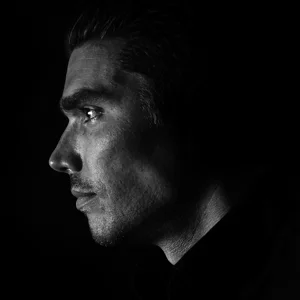 Hi, I'm Matt Rycroft. I'm a filmmaker & content creator based in Salzburg, Austria. I'm fascinated by all things film & photography – please feel free to get in touch with any questions or queries. Let's Get Connected: www.matthewrycroft.com
Hi, I'm Matt Rycroft. I'm a filmmaker & content creator based in Salzburg, Austria. I'm fascinated by all things film & photography – please feel free to get in touch with any questions or queries. Let's Get Connected: www.matthewrycroft.com 
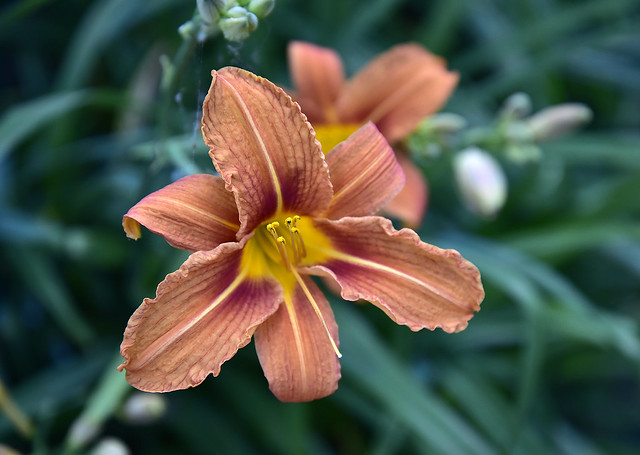
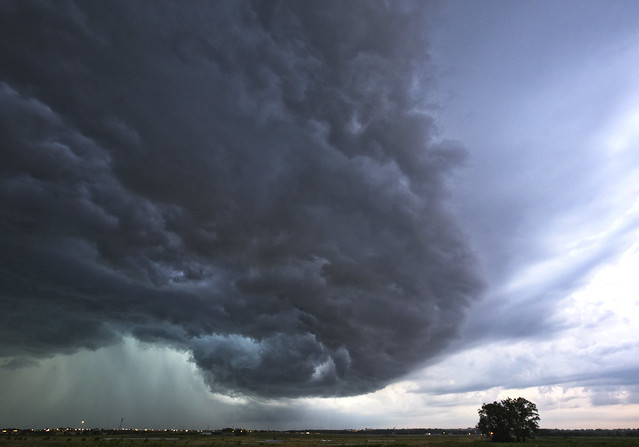





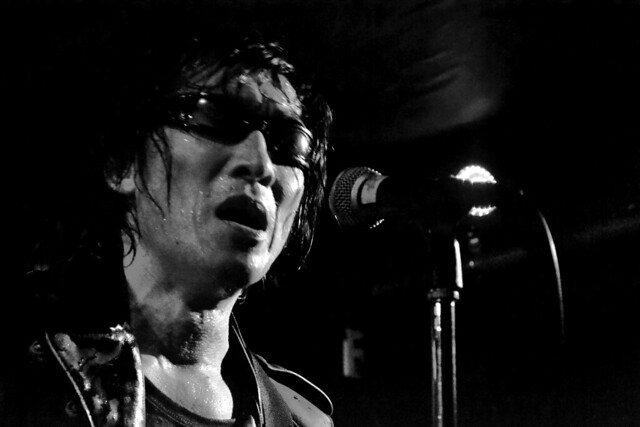

 Yosemite captured using infrared photography. Image by Ryan Berg
Yosemite captured using infrared photography. Image by Ryan Berg  The park takes on a haunting pink hue. Image by Ryan Berg
The park takes on a haunting pink hue. Image by Ryan Berg  A familiar scene, presented in a strange new way. Image by Ryan Berg
A familiar scene, presented in a strange new way. Image by Ryan Berg 
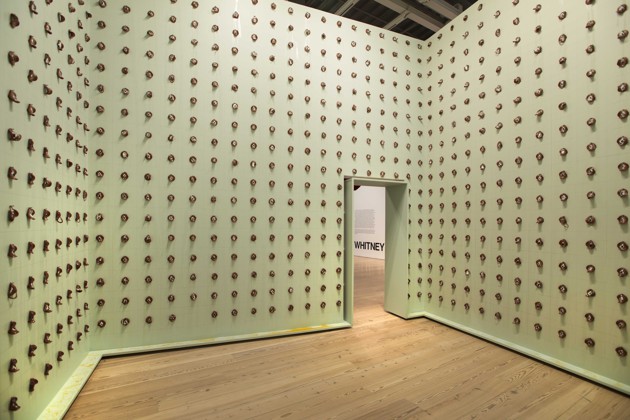 Installation view of Pope.L aka William Pope.L, Claim (Whitney Version), 2017. Whitney Biennial 2017. (Bill Orcutt)
Installation view of Pope.L aka William Pope.L, Claim (Whitney Version), 2017. Whitney Biennial 2017. (Bill Orcutt) 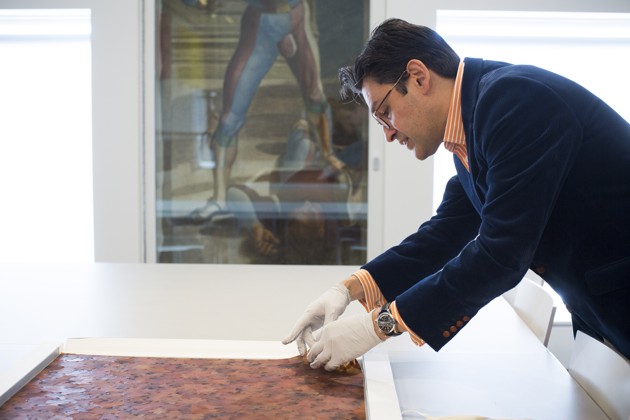 Narayan Khandekar, director of the Straus Center for Conservation and Technical Studies at the Harvard Art Museums, examines a piece composed entirely of rose petals.(Stephanie Mitchell / Harvard)
Narayan Khandekar, director of the Straus Center for Conservation and Technical Studies at the Harvard Art Museums, examines a piece composed entirely of rose petals.(Stephanie Mitchell / Harvard) 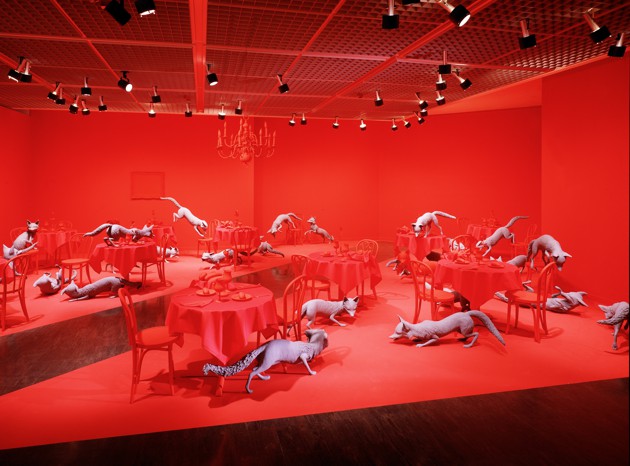 Sandy Skoglund, Fox Games, 1989 (The Denver Art Museum)
Sandy Skoglund, Fox Games, 1989 (The Denver Art Museum) 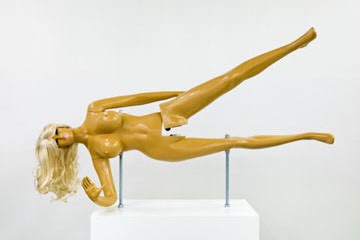 Lysa, 2011 (Courtesy Adam Reich Photography and Jennifer Rubell)
Lysa, 2011 (Courtesy Adam Reich Photography and Jennifer Rubell) 